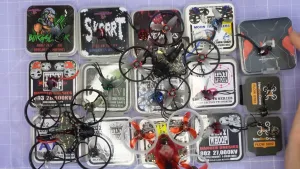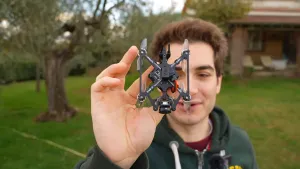Joshua Bird has been hard, at work revolutionizing the realm of 3D printing with his invention. A four axis printer that aims to shake up the conventional printing process as we know it. This groundbreaking design merges a print bed with a cantilevered x axis. Incorporates an extra rotational axis for added functionality and versatility. Get ready for an, in depth exploration of this captivating project!
Unique Kinematic System
Birds printer boasts a system, as its key highlight feature.The x axis is powered by two fixed stepper motors that control a sole belt loop encircling pulleys located at each end of the aluminum extrusion.When these motors turn in directions the x axis moves, in a line.On the hand in case they spin in the direction the extruder undergoes rotation.

The Birds Core R Theta design puts a spin on the CoreXY systems by incorporating both a linear and a rotational axis, into its structure. By adjusting the pulley sizes at each end of the system one can tweak the torque ratio, between these axes to open up a range of applications and functionalities.
Printing Overhangs Beyond 90 Degrees
The fourth axis offers a thrilling advantage. The ability to print overhangs exceeding ninety degrees with ease! Bird showcased this through a slicer that executes a conical slicing method; unlike the usual fixed nozzle rotation, in conical slicing processes; this printer enables unrestricted nozzle rotation.

Users can adjust the angle of the nozzle from pointing towards the bed for adhesion, to ninety degrees at the print tips for optimal results using this flexible feature in Birds process of deforming a parabolic shaped STL file and then transforming it back, to its original form to create elegantly curved layers.
The Challenge of Generalization
Although this advanced slicing technique has its limitations and may not be suitable, for all scenarios—for example with shapes such as a grid that might face challenges like printing in mid air or experiencing issues, at the edges where the nozzle is inwardly directed—Bird imagines the development of a non planar slicing tool that can create G code for intricate models by utilizing all axes to effectively print challenging overhangs.
The Slicer: A Game Changer
Birds optimization driven slicer creates layers strategically to remove the necessity, for supports in 3 printing processes according to him; he envisions this method as a game changer for the industry even on traditional three axis printers featuring elongated nozzels.The slicer is currently under development; however Bird intends to make the code available to the public, in the future.
Custom Build Plate and Cooling System
The construction platform could be crafted from different materials. Bird started off using wood but eventually transitioned to a circuit board produced by JLCPCB to take advantage of their aluminum PCB features as a CNC service, for making the construction platform.

To tackle cooling difficulties in this setup with a printer toolhead called Bird uses an aquarium fish pump to push pressurized air via nozzles located near the hotend region of the printer system. This unique approach plays a role, in preventing any mishaps by establishing a safety zone of 270 degrees to guarantee that the toolhead doesn't come into contact, with the bed when it rotates.
Sensorless Homing and Mechanical Design
Most axes employ sensorless homing by reaching their limits to gauge when they come to a halt—a precise technique that streamlines wiring and design complexity effectively.The majority of the printers parts are crafted using PLA through 3 printing processes; however the extruder mount stands out for being fashioned from steel to enhance durability and robustness.

Accessible and Open Source
This printer isn't a piece of technology – it's also affordable! With estimated parts costing between $300 and $400 and being source enables creators worldwide to explore and create their own versions of it.The moment Bird stumbled upon the RepRap firmware was revolutionary as it empowered him to set up movements without having to alter the firmware setup.

Final Thoughts and Future Plans
Birds new four axis printer represents the start of his journey, in this realm of innovation and creativity within 3 printing technology! His future plans include delving into planar printing techniques and even venturing into the realm of ceramic printing—a true testament, to pushing the boundaries and exploring new frontiers in this exciting field!
FAQ
What is the main feature of Joshua Bird's 3D printer?
The printer has a setup, with a circular print surface and an extended x axis that can rotate independently.
How does the printer handle overhangs greater than 90 degrees?
A specialized conical slicing method is employed to enable the nozzle to rotate and print shapes without the need of additional supports.
What materials can be used for the build plate?
The construction surface may consist of materials such, as wood or aluminum PCB based on what the user prefers and needs.
Is the printer design accessible to others?
Certainly! The design is available for anyone to use and can be put together using parts that cost, between $300 to $400. An option, for both creators and hobbyists.
For more insights and updates, make sure to follow Joshua Bird's YouTube channel!






